-
 Bitcoin
Bitcoin $84,166.4675
3.31% -
 Ethereum
Ethereum $1,879.4720
4.95% -
 Tether USDt
Tether USDt $1.0001
0.02% -
 XRP
XRP $2.1759
5.59% -
 BNB
BNB $616.6847
4.32% -
 Solana
Solana $128.6846
3.61% -
 USDC
USDC $1.0001
0.01% -
 Dogecoin
Dogecoin $0.1736
7.15% -
 Cardano
Cardano $0.6805
6.80% -
 TRON
TRON $0.2342
0.68% -
 Toncoin
Toncoin $4.1289
6.17% -
 Chainlink
Chainlink $13.9778
6.75% -
 UNUS SED LEO
UNUS SED LEO $9.2012
1.09% -
 Stellar
Stellar $0.2738
5.12% -
 Avalanche
Avalanche $19.6492
7.20% -
 Sui
Sui $2.4157
7.98% -
 Shiba Inu
Shiba Inu $0.0...01293
7.08% -
 Hedera
Hedera $0.1713
8.48% -
 Polkadot
Polkadot $4.2380
6.52% -
 Litecoin
Litecoin $85.3267
4.46% -
 Bitcoin Cash
Bitcoin Cash $314.3675
7.74% -
 MANTRA
MANTRA $6.2875
1.66% -
 Bitget Token
Bitget Token $4.6550
4.40% -
 Dai
Dai $1.0001
0.03% -
 Ethena USDe
Ethena USDe $0.9997
-0.02% -
 Pi
Pi $0.7150
3.74% -
 Hyperliquid
Hyperliquid $13.6913
9.39% -
 Monero
Monero $217.7373
0.82% -
 Uniswap
Uniswap $6.2145
7.25% -
 Aptos
Aptos $5.3879
5.12%
What are the differences between public chains, private chains, and consortium chains?
Public chains offer transparency and decentralization but can be slow; private chains prioritize speed and control; consortium chains balance these aspects for collaborative projects.
Mar 27, 2025 at 10:56 am
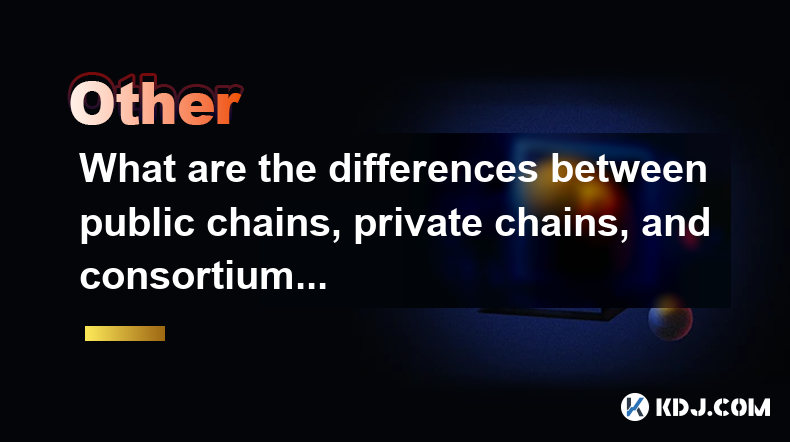
Understanding Blockchain Network Architectures: Public, Private, and Consortium Chains
The blockchain landscape features various network architectures, each designed for different purposes and offering unique characteristics. The three most prominent are public, private, and consortium blockchains. Understanding their differences is crucial for navigating the complexities of the crypto world.
Public chains, like Bitcoin and Ethereum, are open to everyone. Anyone can participate in the network, read the blockchain's data, and contribute to its consensus mechanism. This openness fosters transparency and decentralization, but can lead to scalability issues and vulnerability to attacks. Transaction verification is distributed across many nodes, ensuring security and immutability. However, this decentralized nature can also result in slower transaction speeds compared to other types of blockchains.
Private chains, in contrast, are permissioned networks. Access is controlled by a single entity or organization, which dictates who can participate. This centralized approach prioritizes speed and efficiency, as transaction validation is typically handled by a smaller, trusted group of nodes. Privacy is also enhanced, as only authorized participants can view the blockchain's data. However, this centralized control can compromise the security and immutability benefits often associated with blockchain technology.
Consortium blockchains represent a middle ground between public and private chains. They are permissioned networks, meaning access is restricted to pre-approved participants. However, unlike private chains, control is distributed among multiple organizations, fostering a degree of decentralization and trust. This shared governance model can enhance security and transparency while maintaining the efficiency of a permissioned system. The specific rules and access permissions are jointly determined by the participating organizations.
Let's delve deeper into the key distinctions between these three types of blockchains:
Data Accessibility and Transparency
- Public Chains: Completely open and transparent. Anyone can view all transactions and the entire blockchain history.
- Private Chains: Data is only accessible to authorized participants within the network. Transparency is limited to those with permission.
- Consortium Chains: Data accessibility is controlled by the consortium members. Transparency levels vary depending on the specific consortium's rules and agreements.
Permissioning and Participation
- Public Chains: Permissionless. Anyone can join the network, create accounts, and participate in consensus.
- Private Chains: Permissioned. Access is granted only by the network administrator or owner.
- Consortium Chains: Permissioned. Access is granted by the consortium members to pre-approved participants.
Consensus Mechanisms
- Public Chains: Typically utilize Proof-of-Work (PoW) or Proof-of-Stake (PoS) for consensus, ensuring the integrity of the blockchain.
- Private Chains: Can use various consensus mechanisms, often simpler and faster than those used in public chains, due to the smaller number of nodes. This might include Practical Byzantine Fault Tolerance (PBFT).
- Consortium Chains: The choice of consensus mechanism depends on the specific consortium's needs and preferences, often opting for hybrid approaches.
Scalability and Performance
- Public Chains: Can struggle with scalability, particularly when dealing with high transaction volumes.
- Private Chains: Generally offer superior scalability and performance due to their centralized nature and faster transaction processing.
- Consortium Chains: Scalability lies somewhere between public and private chains, depending on the number of participants and the chosen consensus mechanism.
Security and Trust
- Public Chains: Security relies on the decentralized nature of the network and the cryptographic security of the blockchain itself.
- Private Chains: Security relies on the security measures implemented by the network administrator. A single point of failure exists.
- Consortium Chains: Security is enhanced by the shared responsibility among consortium members, but vulnerabilities can still exist.
Use Cases
- Public Chains: Ideal for decentralized applications (dApps), cryptocurrencies, and transparent, immutable record-keeping.
- Private Chains: Suitable for internal applications within an organization, supply chain management, and secure data sharing within a controlled environment.
- Consortium Chains: Well-suited for collaborative projects involving multiple organizations, inter-bank transactions, and shared data management within a trusted ecosystem.
Frequently Asked Questions
Q: What is the best type of blockchain for my needs?
A: The optimal choice depends on your specific requirements. Consider factors like data privacy, transaction speed, scalability, and the level of decentralization you need. Public chains prioritize decentralization and transparency, private chains offer speed and control, while consortium chains balance these aspects.
Q: Can a private blockchain be converted to a public blockchain?
A: Technically, it's possible, but it's a complex process that requires significant changes to the network architecture and consensus mechanisms. It's not a simple switch.
Q: What are the limitations of consortium blockchains?
A: Consortium blockchains can be slower than private chains, and their level of decentralization is less than that of public chains. Reaching consensus among multiple organizations can also be challenging.
Q: Are consortium blockchains truly decentralized?
A: Consortium blockchains offer a degree of decentralization compared to private chains, as control is shared among multiple organizations. However, they are not as decentralized as public blockchains, where control is distributed among countless participants.
Q: What are the security risks associated with each type of blockchain?
A: Public chains face risks from 51% attacks and other forms of malicious activity. Private chains are vulnerable to single points of failure. Consortium chains face risks related to collusion among consortium members or compromise of a single member's node.
Disclaimer:info@kdj.com
The information provided is not trading advice. kdj.com does not assume any responsibility for any investments made based on the information provided in this article. Cryptocurrencies are highly volatile and it is highly recommended that you invest with caution after thorough research!
If you believe that the content used on this website infringes your copyright, please contact us immediately (info@kdj.com) and we will delete it promptly.
- Bitcoin (BTC) Price Action Remains Subdued Awaiting Next Market Catalyst
- 2025-04-01 17:10:12
- Future World Token (FWT) Is Redefining the Cryptocurrency Landscape
- 2025-04-01 17:10:12
- Ethereum (ETH) Price Analysis: Battling Resistance as It Attempts a Recovery from Recent Declines
- 2025-04-01 17:05:12
- Tether Deepens Its Bitcoin Investment Strategy by Acquiring 8,888 BTC
- 2025-04-01 17:05:12
- Ethereum reclaims its title as the leading smart contract blockchain for DEX trading
- 2025-04-01 17:00:12
- Bitcoin reflects small profits on national as well as international exchanges
- 2025-04-01 17:00:12
Related knowledge
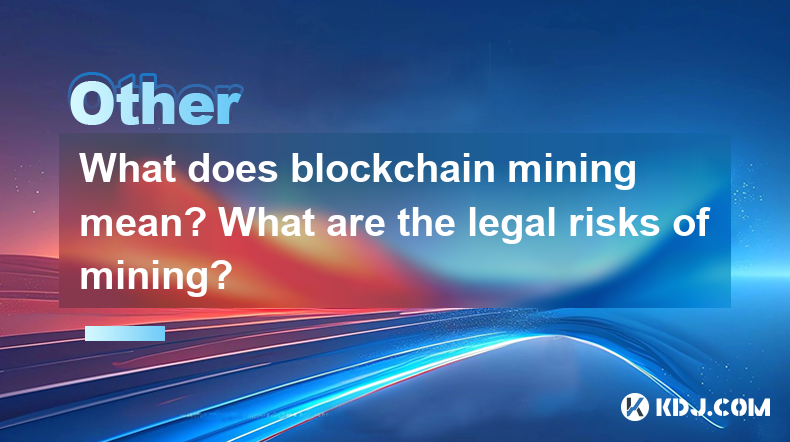
What does blockchain mining mean? What are the legal risks of mining?
Mar 31,2025 at 05:07pm
Blockchain mining is the process by which transactions are verified and added to the public ledger, known as the blockchain. Miners use powerful computers to solve complex mathematical problems, which, once solved, allow them to add a block of transactions to the blockchain. In return, miners are rewarded with cryptocurrency, typically Bitcoin. This pro...
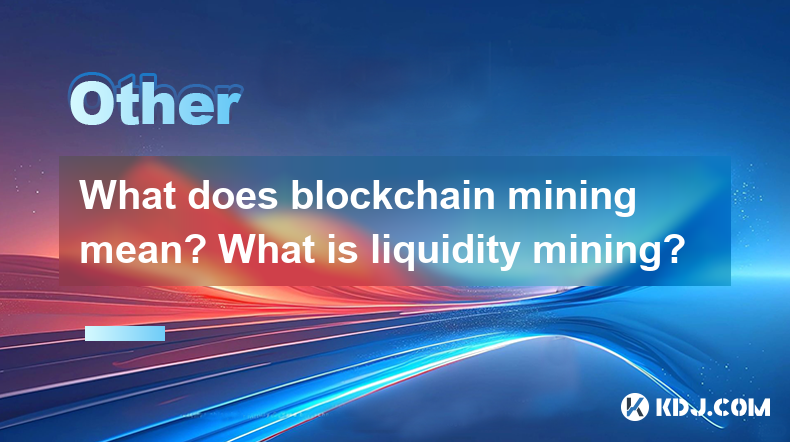
What does blockchain mining mean? What is liquidity mining?
Apr 01,2025 at 12:07am
What is Blockchain Mining?Blockchain mining is a critical process in the world of cryptocurrencies, particularly for networks like Bitcoin and Ethereum. It involves the use of computational power to solve complex mathematical problems, which in turn validates transactions and adds them to the blockchain. Miners are incentivized through rewards, typicall...
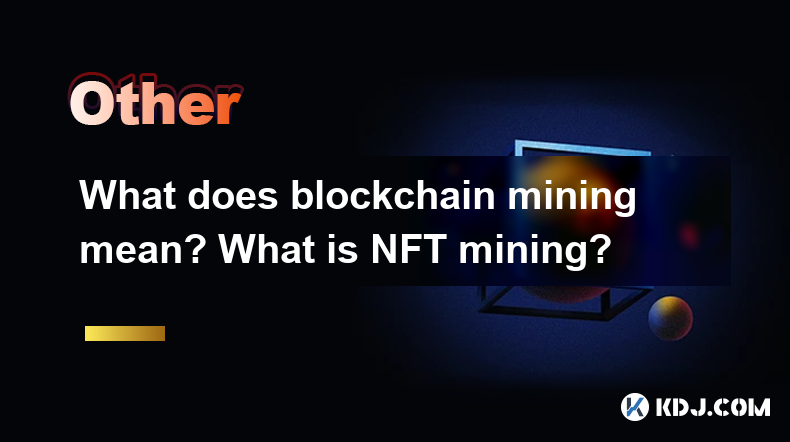
What does blockchain mining mean? What is NFT mining?
Mar 31,2025 at 04:07pm
Blockchain mining is a crucial process in the world of cryptocurrencies, particularly for networks like Bitcoin and Ethereum. It involves verifying transactions and adding them to the blockchain, a decentralized ledger. Miners use powerful computers to solve complex mathematical problems, which, when solved, allow them to add a block of transactions to ...

What does blockchain mining mean? What is the difference between cold wallets and hot wallets for mining?
Apr 01,2025 at 07:56am
Blockchain mining is a critical process in the world of cryptocurrencies. It involves verifying transactions and adding them to the blockchain, a decentralized ledger. Miners use powerful computers to solve complex mathematical problems, which, when solved, allow them to add a block of transactions to the blockchain. In return, miners are rewarded with ...
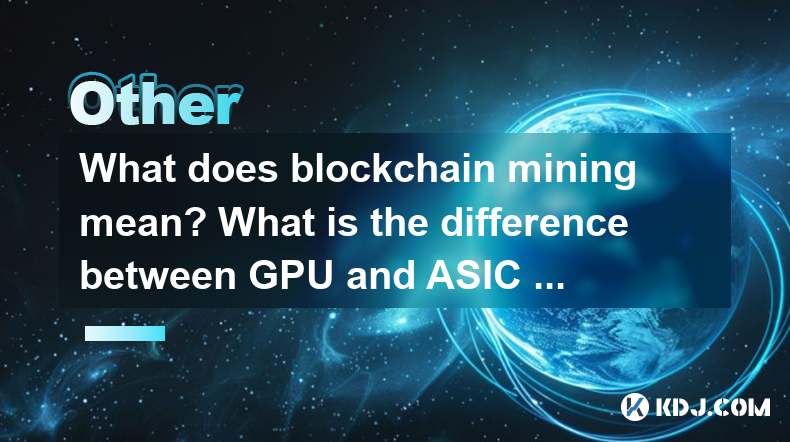
What does blockchain mining mean? What is the difference between GPU and ASIC mining?
Apr 01,2025 at 11:56am
Blockchain mining is a crucial process in the world of cryptocurrencies, particularly for networks like Bitcoin and Ethereum. At its core, mining involves solving complex mathematical problems to validate transactions and add them to the blockchain, a decentralized ledger. Miners compete to solve these problems, and the first to succeed is rewarded with...
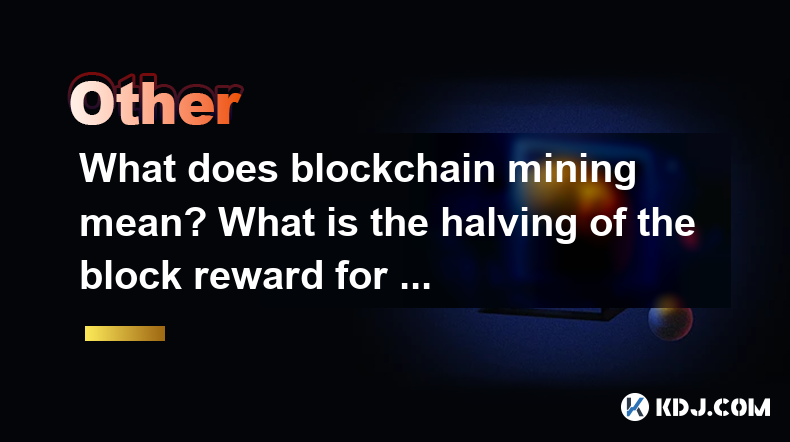
What does blockchain mining mean? What is the halving of the block reward for mining?
Mar 31,2025 at 03:43pm
Blockchain mining is a crucial process in the world of cryptocurrencies, particularly for networks like Bitcoin. It involves solving complex mathematical problems to validate transactions and add them to the blockchain, a public ledger of all cryptocurrency transactions. Miners use powerful computers to compete in solving these problems, and the first t...

What does blockchain mining mean? What are the legal risks of mining?
Mar 31,2025 at 05:07pm
Blockchain mining is the process by which transactions are verified and added to the public ledger, known as the blockchain. Miners use powerful computers to solve complex mathematical problems, which, once solved, allow them to add a block of transactions to the blockchain. In return, miners are rewarded with cryptocurrency, typically Bitcoin. This pro...

What does blockchain mining mean? What is liquidity mining?
Apr 01,2025 at 12:07am
What is Blockchain Mining?Blockchain mining is a critical process in the world of cryptocurrencies, particularly for networks like Bitcoin and Ethereum. It involves the use of computational power to solve complex mathematical problems, which in turn validates transactions and adds them to the blockchain. Miners are incentivized through rewards, typicall...

What does blockchain mining mean? What is NFT mining?
Mar 31,2025 at 04:07pm
Blockchain mining is a crucial process in the world of cryptocurrencies, particularly for networks like Bitcoin and Ethereum. It involves verifying transactions and adding them to the blockchain, a decentralized ledger. Miners use powerful computers to solve complex mathematical problems, which, when solved, allow them to add a block of transactions to ...

What does blockchain mining mean? What is the difference between cold wallets and hot wallets for mining?
Apr 01,2025 at 07:56am
Blockchain mining is a critical process in the world of cryptocurrencies. It involves verifying transactions and adding them to the blockchain, a decentralized ledger. Miners use powerful computers to solve complex mathematical problems, which, when solved, allow them to add a block of transactions to the blockchain. In return, miners are rewarded with ...

What does blockchain mining mean? What is the difference between GPU and ASIC mining?
Apr 01,2025 at 11:56am
Blockchain mining is a crucial process in the world of cryptocurrencies, particularly for networks like Bitcoin and Ethereum. At its core, mining involves solving complex mathematical problems to validate transactions and add them to the blockchain, a decentralized ledger. Miners compete to solve these problems, and the first to succeed is rewarded with...

What does blockchain mining mean? What is the halving of the block reward for mining?
Mar 31,2025 at 03:43pm
Blockchain mining is a crucial process in the world of cryptocurrencies, particularly for networks like Bitcoin. It involves solving complex mathematical problems to validate transactions and add them to the blockchain, a public ledger of all cryptocurrency transactions. Miners use powerful computers to compete in solving these problems, and the first t...
See all articles























































































